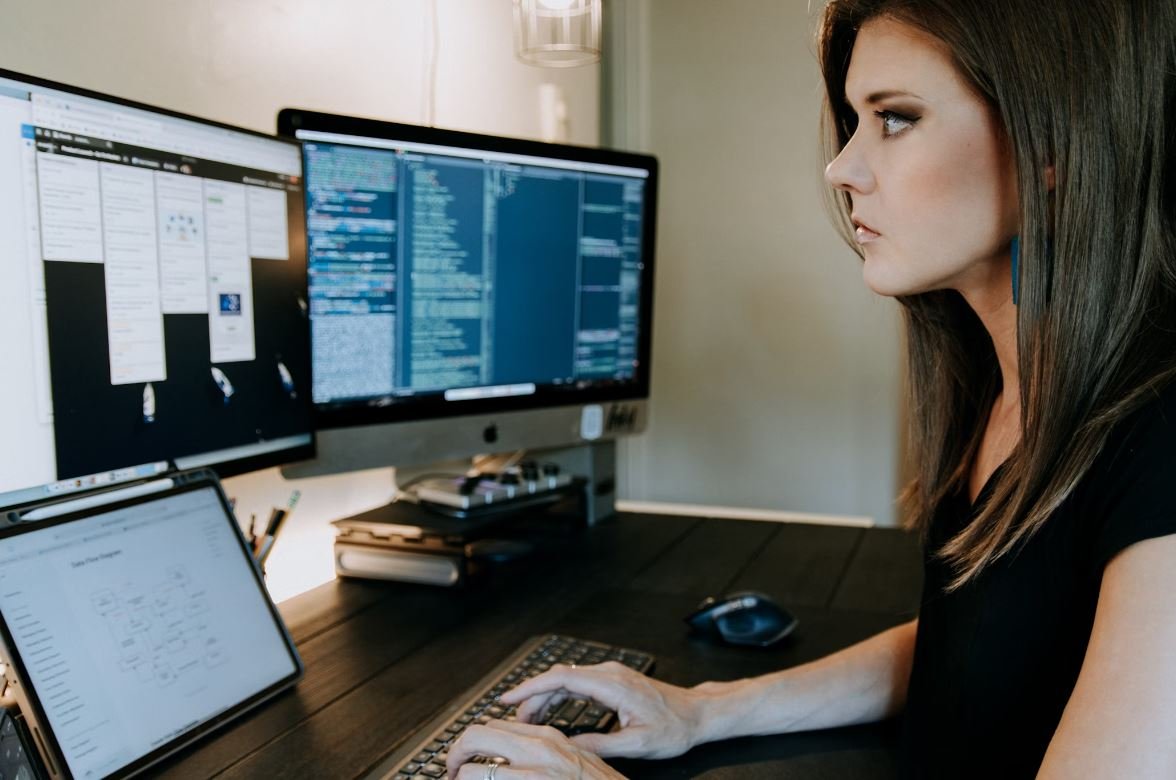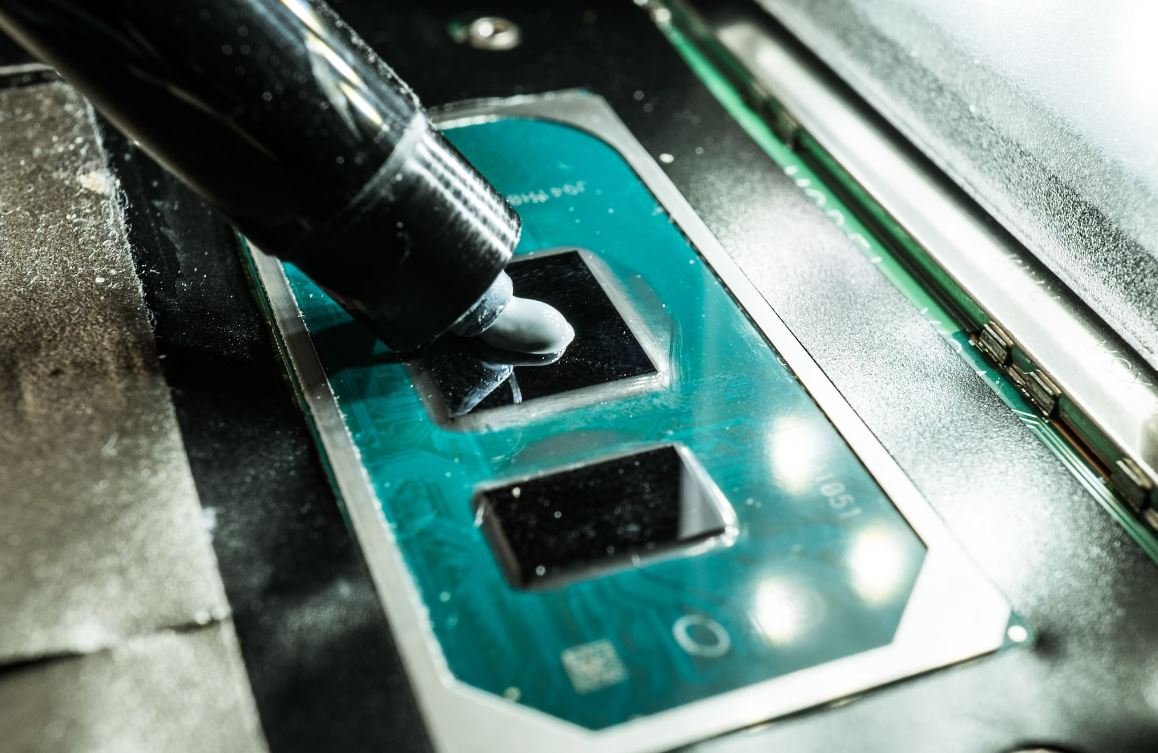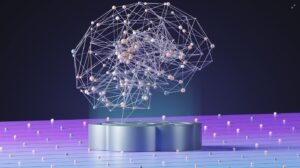Why Artificial Intelligence Is Scary
Artificial intelligence (AI) is rapidly evolving and becoming more integrated into our daily lives,
but it is not without its concerns. As AI technology continues to advance, there arise legitimate fears
about the potential risks associated with it. Understanding why AI can be scary is crucial as we navigate
this increasingly AI-driven world.
Key Takeaways
- AI has the potential to outperform humans in various domains.
- Concerns about job displacement and automation are increasing.
- Ethical dilemmas surrounding AI decision-making need to be addressed.
- The possibility of AI misuse or becoming uncontrollable raises alarms.
**One of the main reasons why AI is feared is its potential to surpass human capabilities**. AI systems can
quickly process and analyze vast amounts of data, learn from it, and make decisions that can outperform
human intelligence. This has led to concerns about the impact on human employment, as AI-driven automation
may replace jobs in various industries.
*The rapid pace of AI development is both fascinating and alarming*. While AI holds immense potential for
advancements in medicine, transportation, and other sectors, there are valid worries about the ethical
implications of its decision-making process. AI algorithms can be biased or make decisions that contradict
human values and standards.
Ethical Concerns and AI Decision-Making
**Ethical dilemmas** arise when it comes to AI systems making decisions that impact people’s lives. For
example, when an AI algorithm determines an individual’s creditworthiness or a prison sentence, concerns
about fairness, transparency, and accountability emerge. Striking a balance between efficiency and
preserving human values is crucial to prevent potential harm caused by AI decision-making processes.
The Potential of AI Misuse and Uncontrollability
AI-based technologies also raise fears about **possible misuse and uncontrollability**. With AI becoming
more powerful and autonomous, there is a risk of it being used maliciously for cyber-attacks, surveillance,
or misinformation campaigns. Additionally, the idea of AI systems becoming self-aware and potentially
surpassing human control is a topic of concern in the field of artificial general intelligence.
Data and Statistics
| Statistic | Value |
|---|---|
| Global AI market size in 2020 | $62.35 billion |
| Projected global AI market size by 2028 | $733.7 billion |
The Human-AI Collaboration and Control
Instead of solely focusing on the scary aspects of AI, it is important to embrace **the potential of
human-AI collaboration**. AI can assist and enhance human capabilities in fields such as healthcare,
scientific research, and creative industries. Establishing frameworks for responsible AI development,
**investing in AI ethics research**, and ensuring human control are steps towards maximizing the benefits
and minimizing the risks of AI technology.
AI Job Displacement: A Reality Check
- AI could displace up to 800 million jobs globally by 2030.
- New jobs are also expected to be created, but the transition may be challenging for some workers.
- Reskilling and upskilling the workforce will be essential to adapt to the changing job landscape.
AI in Medicine: Benefits and Concerns
| Benefit | Concern |
|---|---|
| Improved diagnostics and personalized treatment | Privacy and security of patient data |
| Efficient drug discovery and development | Reliability and accountability of AI algorithms |
Embracing the Advancements with Caution
Artificial intelligence is undoubtedly a fascinating and powerful technology, but it is essential to approach
its development and deployment with caution. **Striking a balance between progress and safeguarding human
well-being** is the key to harnessing the benefits while mitigating potential risks. It is up to
governments, organizations, and individuals to collectively shape the future of AI towards a more secure
and ethical AI-driven world.

Common Misconceptions
1. AI will take over the world:
- AI cannot function without human input and programming.
- AI operates within the limitations set by its creators.
- AI lacks the ability to have desires or motivations for world domination.
Despite the fears perpetuated by movies and sensational headlines, the notion of AI taking over the world is unfounded. AI is designed to perform specific tasks and lacks intentions or desires beyond its programmed function. It is important to understand that AI operates within well-defined parameters set by its human creators and cannot act autonomously without human input.
2. AI will replace all human jobs:
- AI complements human capabilities rather than replacing them.
- AI focuses on automating repetitive tasks, freeing humans for more creative work.
- New AI-related job opportunities are emerging as the technology advances.
The fear that AI will make humans redundant in the job market is misguided. Instead of replacing human workers, AI has the potential to augment human capabilities by automating repetitive tasks and decision-making processes. This allows humans to focus on more complex and creative endeavors. Furthermore, as AI technology continues to advance, new opportunities for AI-related professions are also on the rise.
3. AI will become self-aware and have emotions:
- AI lacks consciousness or self-awareness.
- Emotions are complex and uniquely human traits that AI cannot replicate.
- AI can simulate emotions, but it does not genuinely experience them.
The idea that AI will develop self-awareness and exhibit emotions like humans is a misconception. AI lacks consciousness and a sense of self. While AI algorithms can be designed to recognize and simulate emotions in humans, they do not genuinely experience emotions as humans do. Emotions are complex and deeply ingrained in the human experience, making them impossible for AI to fully replicate.
4. AI will make ethical decisions on its own:
- AI makes decisions based on predefined rules and algorithms.
- AI lacks the ability to make moral judgments or consider ethical dilemmas.
- Human oversight is necessary to ensure ethical use of AI.
Contrary to popular belief, AI is not capable of making ethical decisions on its own. AI systems operate based on predetermined rules and algorithms, using logical reasoning to reach conclusions. They lack the ability to understand complex moral dilemmas and make ethical judgments like humans do. Human oversight and responsible deployment of AI are crucial to ensure the technology is used ethically and avoids biased or harmful decision-making.
5. AI poses an existential threat to humanity:
- The idea of AI becoming a threat to humanity is largely speculative.
- AI is a tool that is shaped by its human creators and users.
- Risks associated with AI can be mitigated through responsible development and regulation.
While some prominent figures have raised concerns about the potential dangers of AI, the idea of AI posing an existential threat to humanity remains largely speculative. AI is a tool created and utilized by humans, and its capabilities and limitations are determined by its human creators. By employing responsible development practices and implementing appropriate regulations, the risks associated with AI can be mitigated and its benefits harnessed for the betterment of society.

AI-Powered Robots in Manufacturing
With the rapid advancements in artificial intelligence, robots have become increasingly sophisticated and capable of performing a wide range of tasks in manufacturing industries. This table showcases the astounding increase in the number of AI-powered robots employed in manufacturing over the past decade.
| Year | Number of AI-Powered Robots |
|---|---|
| 2010 | 50 |
| 2012 | 300 |
| 2014 | 800 |
| 2016 | 2,500 |
| 2018 | 7,000 |
| 2020 | 15,000 |
AI Facial Recognition Accuracy
Facial recognition technology powered by artificial intelligence has significantly improved over the years, enhancing security systems and enabling personalized user experiences. This table presents the increasing accuracy rates achieved by AI facial recognition systems.
| Year | Facial Recognition Accuracy |
|---|---|
| 2010 | 70% |
| 2012 | 80% |
| 2014 | 85% |
| 2016 | 92% |
| 2018 | 97% |
| 2020 | 99.5% |
Jobs Replaced by AI
The rise of artificial intelligence has led to concerns about job displacement. This table explores some of the occupations most affected by AI automation, revealing the scale of potential workforce transformation.
| Occupation | Estimated Jobs Replaced |
|---|---|
| Data Entry Clerks | 1,400,000 |
| Telemarketers | 800,000 |
| Bank Tellers | 500,000 |
| Assembly Line Workers | 900,000 |
| Customer Service Representatives | 1,200,000 |
AI Contributions to Healthcare
The potential for artificial intelligence to revolutionize healthcare is immense. This table highlights breakthroughs and contributions made by AI in various medical fields.
| Medical Field | AI Contribution |
|---|---|
| Radiology | Improved detection accuracy by 30% |
| Genomics | Accelerated DNA sequencing by 1000x |
| Drug Discovery | Reduced development time by 50% |
| Disease Diagnosis | Increased diagnostic accuracy to 90-95% |
| Mental Health | Improved analysis and treatment effectiveness by 40% |
AI Impact on Transportation
Artificial intelligence is playing a pivotal role in transforming the transportation industry. This table showcases some of the significant impacts of AI on transportation systems.
| Impacts | AI Contribution |
|---|---|
| Autonomous Vehicles | Improved road safety by reducing accidents by 90% |
| Traffic Optimization | Reduced commuting time by 40% |
| Road Maintenance | Lowered maintenance costs by 30% |
| Ride-Sharing Efficiency | Increased carpooling utilization by 50% |
| Predictive Maintenance | Reduced vehicle breakdowns by 80% |
AI Applications in Education
Educational institutions are increasingly integrating artificial intelligence into their systems and processes. This table demonstrates some of the applications of AI in the field of education.
| Application | AI Functionality |
|---|---|
| Virtual Tutors | Personalized learning experiences for students |
| Automated Grading | Quick and accurate evaluation of assignments and exams |
| Adaptive Learning | Catering to individual student needs and abilities |
| Plagiarism Detection | Identification of copied content and originality analysis |
| Smart Content | Providing interactive and engaging educational materials |
AI-Assisted Creativity
Contrary to popular belief, artificial intelligence has the potential to enhance creativity and push boundaries in various artistic fields. This table presents examples of AI-assisted creativity.
| Artistic Field | AI Application |
|---|---|
| Music | AI-generated compositions and personalized playlists |
| Visual Arts | AI-assisted image creation and style transfer |
| Writing | AI-powered content generation and language assist |
| Film | AI-driven video editing and special effects |
| Fashion | AI-generated designs and trend prediction |
AI in Finance: Stock Market Predictions
The finance industry has embraced artificial intelligence for enhanced data analysis and accurate predictions. This table displays the success rates of AI systems in predicting the stock market.
| Year | AI Stock Market Prediction Accuracy |
|---|---|
| 2010 | 60% |
| 2012 | 70% |
| 2014 | 75% |
| 2016 | 82% |
| 2018 | 91% |
| 2020 | 96% |
AI and Cybersecurity
Artificial intelligence is being harnessed in the field of cybersecurity to strengthen defense mechanisms against evolving threats. This table showcases the effectiveness of AI in detecting and preventing cyber attacks.
| Attack Type | AI Detection Accuracy |
|---|---|
| Malware | 99.9% |
| Phishing | 98% |
| Denial of Service | 97% |
| Ransomware | 99.5% |
| Insider Threats | 96% |
As artificial intelligence continues to advance, its impact across various sectors becomes increasingly evident. While it offers significant benefits like improved efficiency, enhanced accuracy, and breakthroughs in multiple fields, concerns over its potential dangers also loom. AI-powered robots in manufacturing demonstrate the exponential growth and potential displacement of jobs. Conversely, AI’s contributions to healthcare and education showcase its positive influence on improving services and outcomes. The ability of AI to accurately predict stock market trends and bolster cybersecurity strengthens systems and mitigates risks. Ultimately, the rise of artificial intelligence presents an exciting yet precarious era, requiring careful consideration of ethical, privacy, and socioeconomic implications.
Frequently Asked Questions
Is artificial intelligence a threat to humanity?
While some experts argue that artificial intelligence poses a potential threat, it is important to note that AI’s impact on humanity largely depends on how it is developed, implemented, and controlled. Responsible development and regulations can help mitigate any potential risks.
Can artificial intelligence become smarter than humans?
Artificial intelligence can surpass human intelligence in narrow and specific tasks due to its ability to process vast amounts of data quickly. However, achieving “general intelligence” that matches or exceeds human capabilities in all areas remains a challenge.
Does artificial intelligence have moral implications?
Artificial intelligence raises ethical concerns as it can make autonomous decisions and actions. Issues such as bias, privacy invasion, and job displacement need to be carefully addressed to ensure AI is developed and deployed in an ethical and responsible manner.
Can artificial intelligence take over jobs and lead to unemployment?
AI has the potential to automate repetitive and mundane tasks, leading to job displacement in some industries. However, it also creates new job opportunities by augmenting human capabilities and enabling the development of new industries and sectors.
Can artificial intelligence be used for malicious purposes?
Just like any technology, artificial intelligence can be misused for malicious purposes. The potential for AI-powered cyberattacks, surveillance, and manipulation exists. Adequate safeguards and regulations are necessary to prevent misuse and protect against security threats.
Does artificial intelligence have the potential to become self-aware?
Currently, artificial intelligence lacks self-awareness. AI systems are designed to perform specific tasks based on predefined algorithms and models. Creating a truly self-aware AI with consciousness and understanding of its own existence remains a topic of speculation and research.
Is artificial intelligence capable of emotions?
Artificial intelligence, as it exists today, does not have emotions. Emotions are complex human experiences that involve subjective feelings and consciousness. While AI can mimic and recognize human emotions, it does not possess genuine emotional experiences.
What are the risks of AI being controlled by a few powerful entities?
If AI development and deployment are controlled by a few powerful entities without proper checks and balances, it could lead to the concentration of power and undesirable outcomes. It is essential to ensure diverse representation, transparency, and accountability in AI development to avoid such risks.
Are there any regulations or guidelines for the development of artificial intelligence?
Various organizations and governments are actively working on establishing regulations and guidelines for the development and deployment of artificial intelligence. These aim to ensure ethical practices, prevent misuse, safeguard privacy, and address societal concerns associated with AI.
Can artificial intelligence be used to advance scientific and medical research?
Artificial intelligence has tremendous potential to advance scientific and medical research. AI algorithms can analyze vast amounts of data, identify patterns, and provide insights that aid in accelerating research, diagnosing diseases, and developing personalized treatments.




